The Montjuïc Castle, known in Catalan as Castell de Montjuïc, is a 14th-century fortification in Barcelona. Positioned atop Montjuïc Park on a rocky cliff that rises over 170 meters (about 558 feet) above the city and the sea, this fortress is one of the most popular attractions in Barcelona. It offers stunning views of the city, the port, and its surroundings. In this article, we’ll discuss what it’s like to visit Montjuïc Castle.
Visiting Montjuïc Castle: A Must-See Experience in Barcelona
Montjuïc: The “Mountain of the Jews”
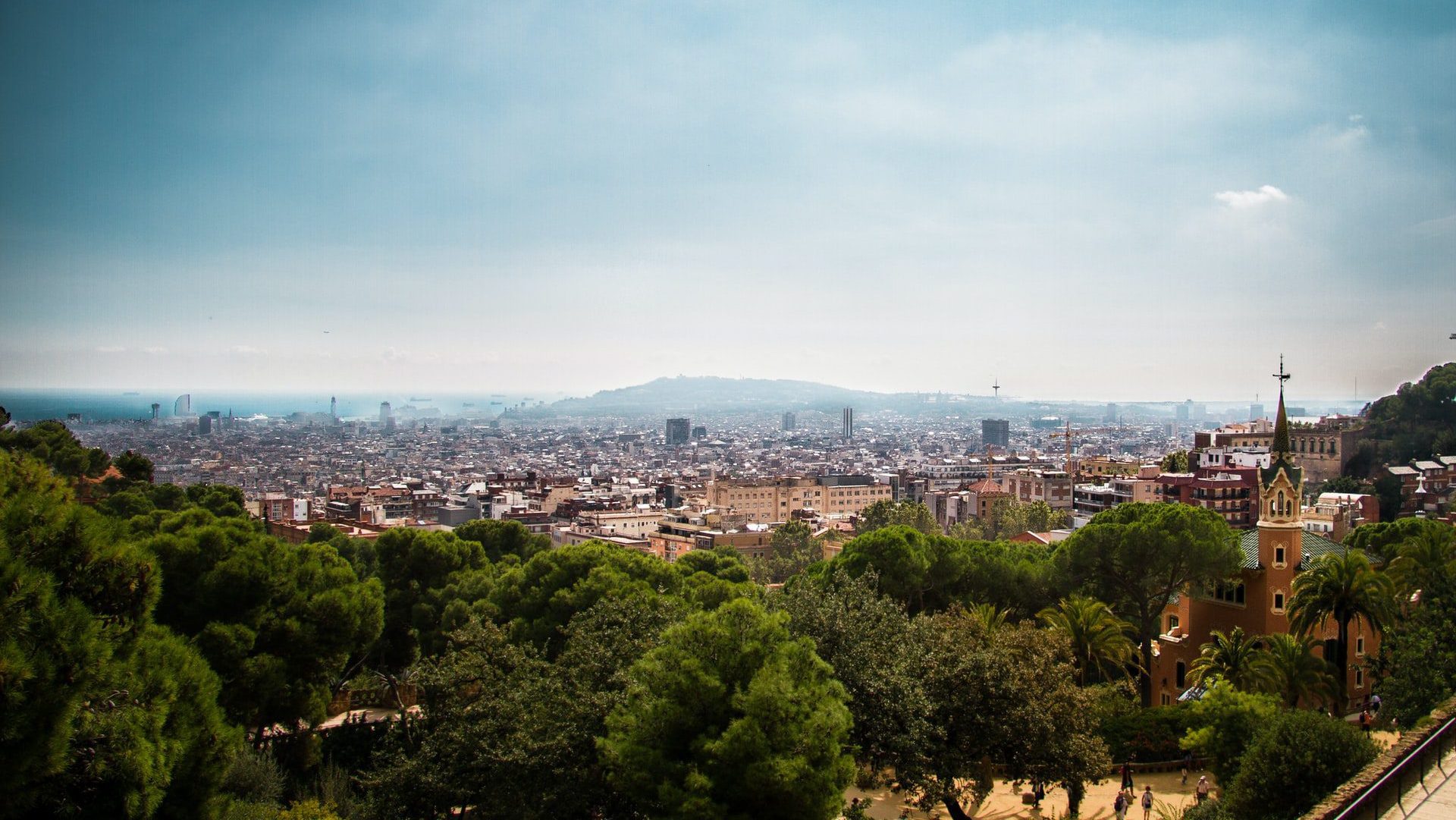
Montjuïc is a rocky elevation that dominates the skyline of central Barcelona and represents one of the city’s most iconic images. At 177.7 meters (about 583 feet) high, the mountain has played a crucial role in the development, protection (and, in later times, repression) of the city. This rocky hill of Neogene origin is made up of sedimentary rocks and is largely covered by pine trees, eucalyptus, and shrubs.
As for the etymology of its name, it is traditionally attributed the meaning “Mountain of the Jews“, supposedly derived from medieval Catalan, prompted by the existence of a Jewish cemetery on the mountain. Another theory suggests it is a corruption of the Latin Mons Iovis (Mount of Jupiter).
Montjuïc is one of the most prominent natural spaces and one of the most visited attractions in Barcelona. Besides the castle, the mountain hosts the National Art Museum of Catalonia, the Poble Sec neighborhood, several stadiums and facilities from the 1992 Barcelona Olympics, the Magic Fountain, and the Poble Espanyol.
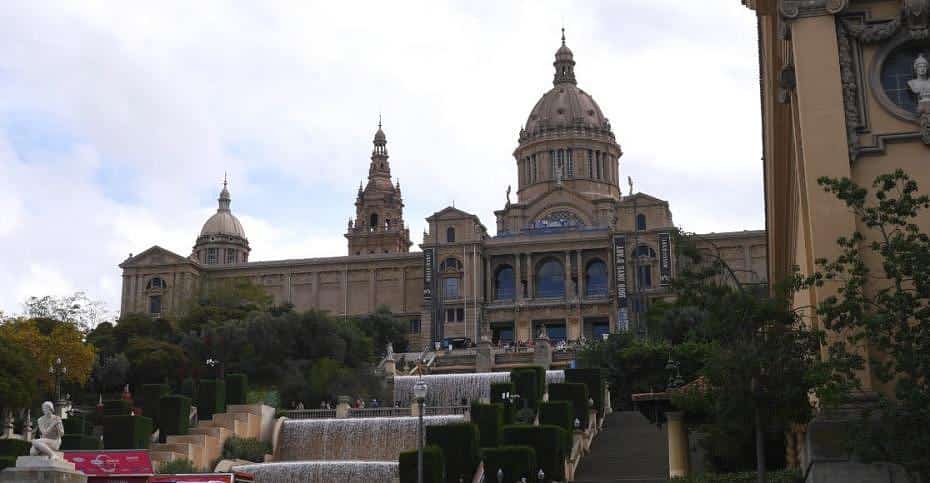
At its base, Plaça d’Espanya serves as a grand monumental gateway to the mountain and the grounds of the 1929 Universal Exposition, constructed according to Puig i Cadafalch’s design in the early 20th century.
About Montjuïc Castle
The Montjuïc Castle in Barcelona was a military fortress and, after the Civil War, a military museum. It is currently a municipal space managed by the Ajuntament de Barcelona.

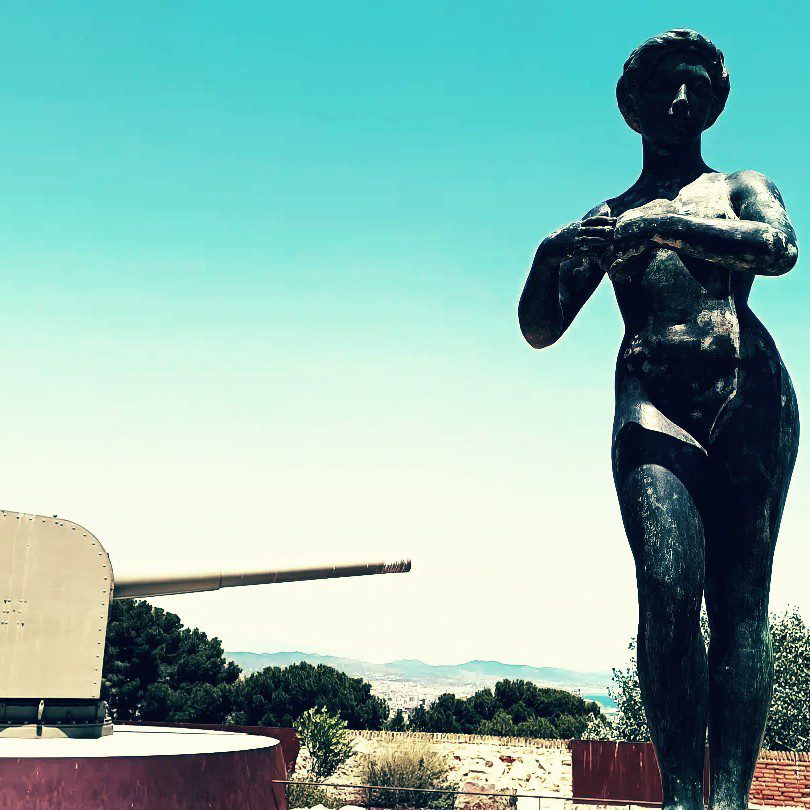
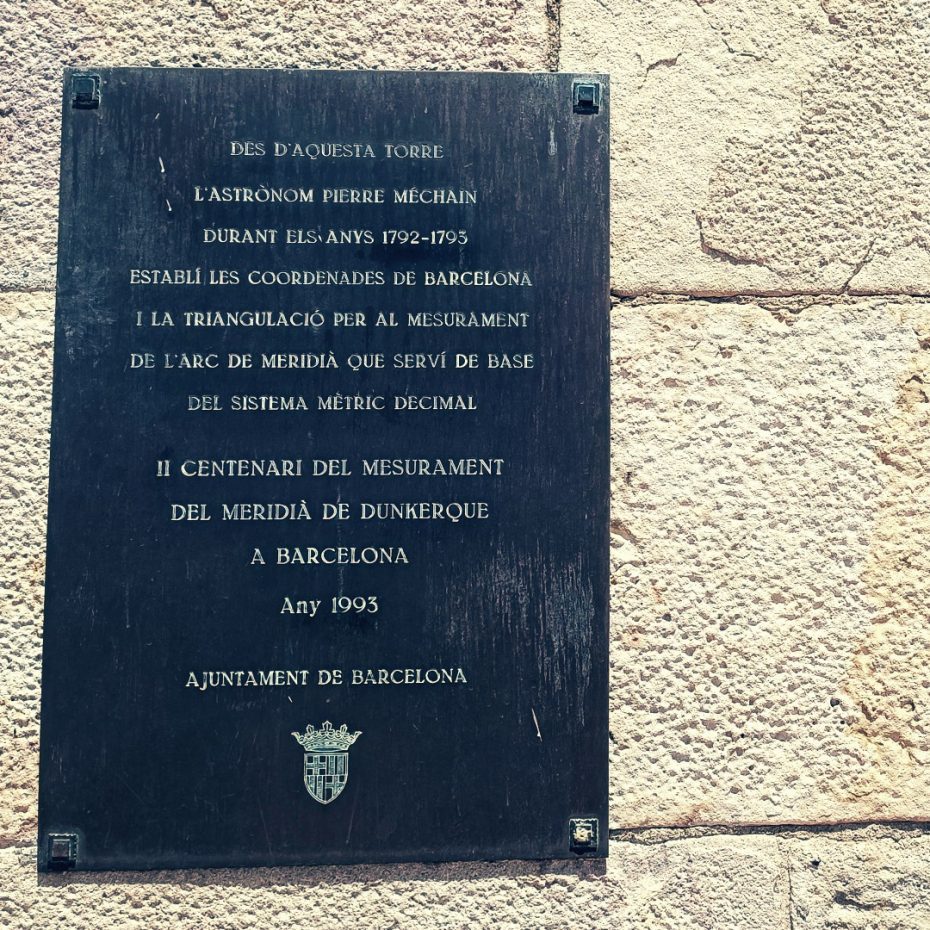
The current appearance of the fortifications is the work of military engineer Juan Martín Cermeño, who demolished the old 1640 fort. Cermeño modified the existing fortifications and built new ones following the defensive systems conceived by the French engineer Vauban.
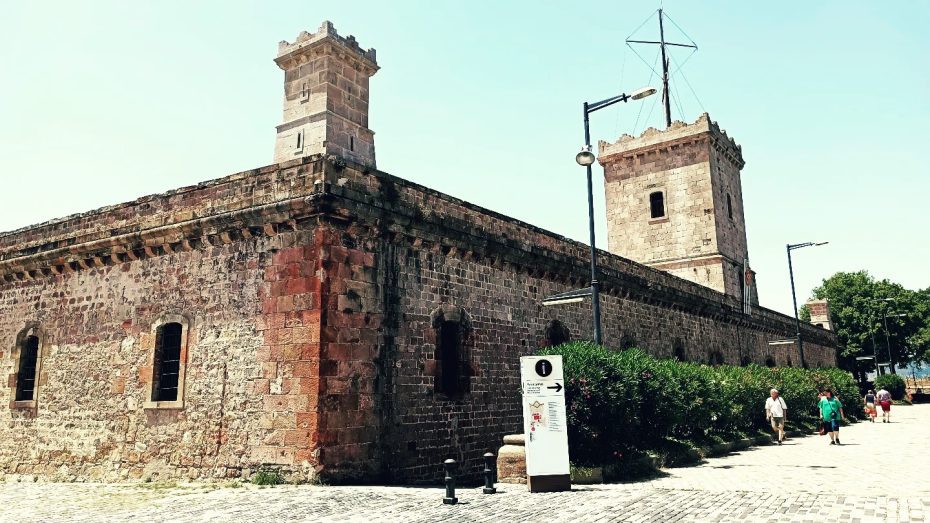
The fortress has a star-shaped layout.
Several bastions and outer constructions protect the core of the enclosure, which is surrounded by a deep moat.
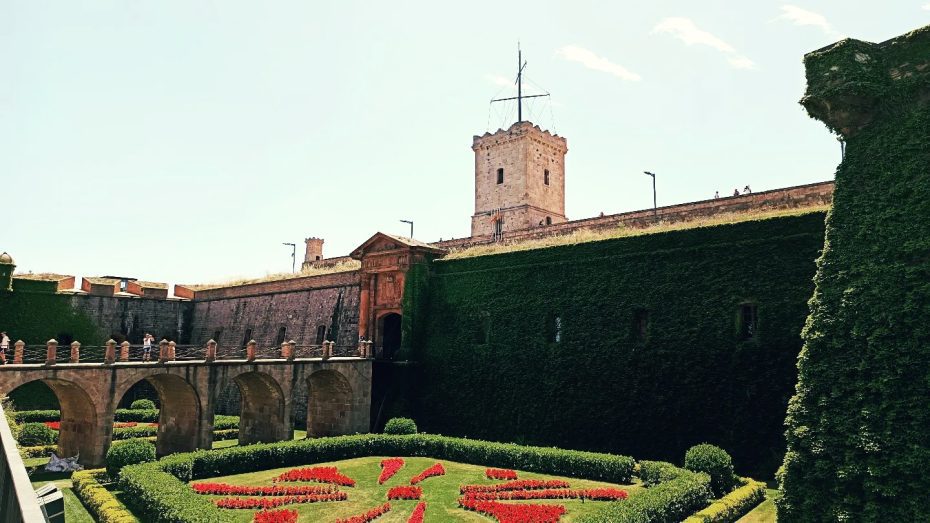
The main body is structured around a porticoed courtyard. The rooms are covered with barrel vaults.
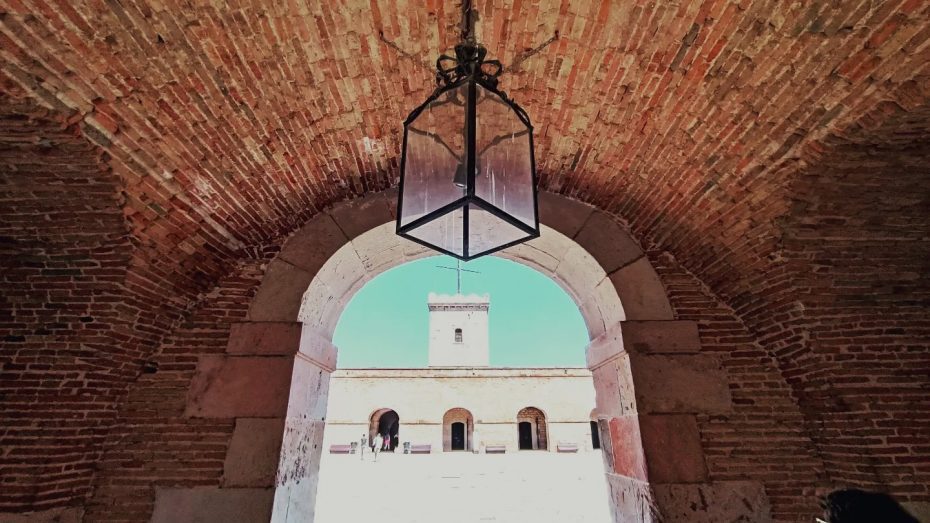
Montjuïc Castle Offers Some of the Best Views in Barcelona
While visiting this Barcelona fortress is worthwhile for its history and architecture, the main reason to climb Montjuïc Castle is to admire the fabulous views of Barcelona and the Mediterranean Sea from its walls, courtyards, and paths. The Castell de Montjuïc offers what could very well be the best free views in Barcelona.
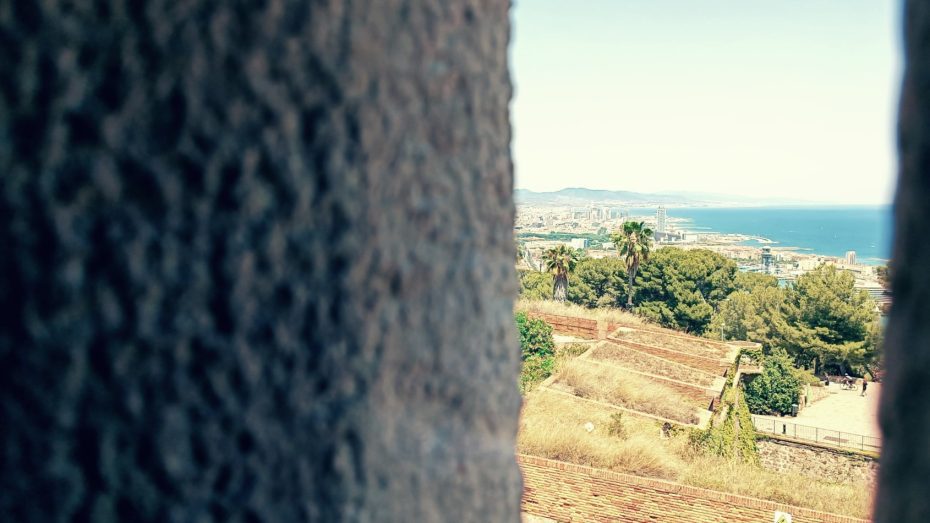
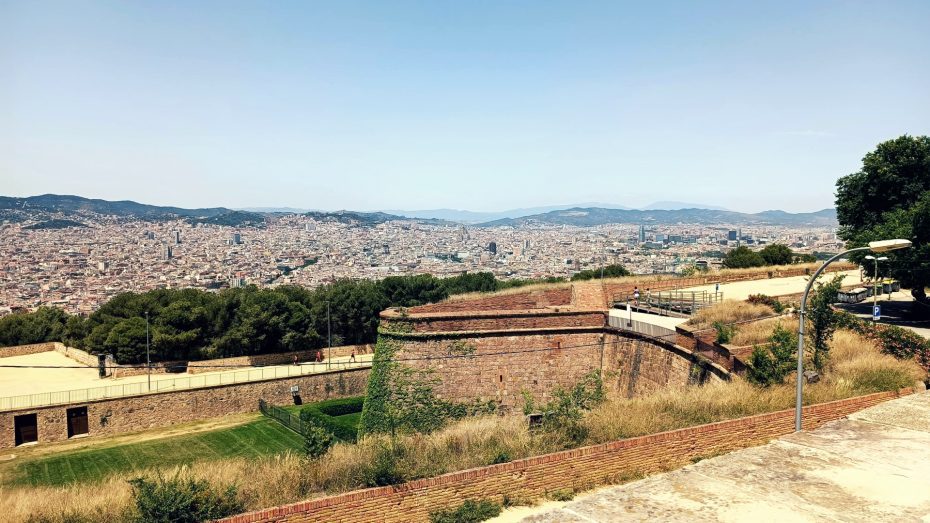

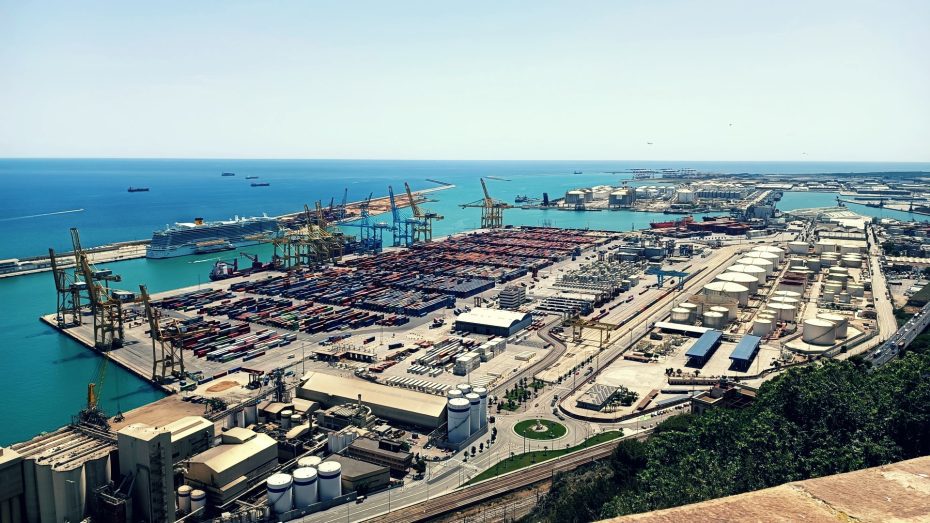
Barcelona Tours & Activities
Visiting the Montjuïc Castle Museum
Castell de Montjuïc hosts temporary exhibitions that are programmed throughout the year in the halls of the main parade ground.

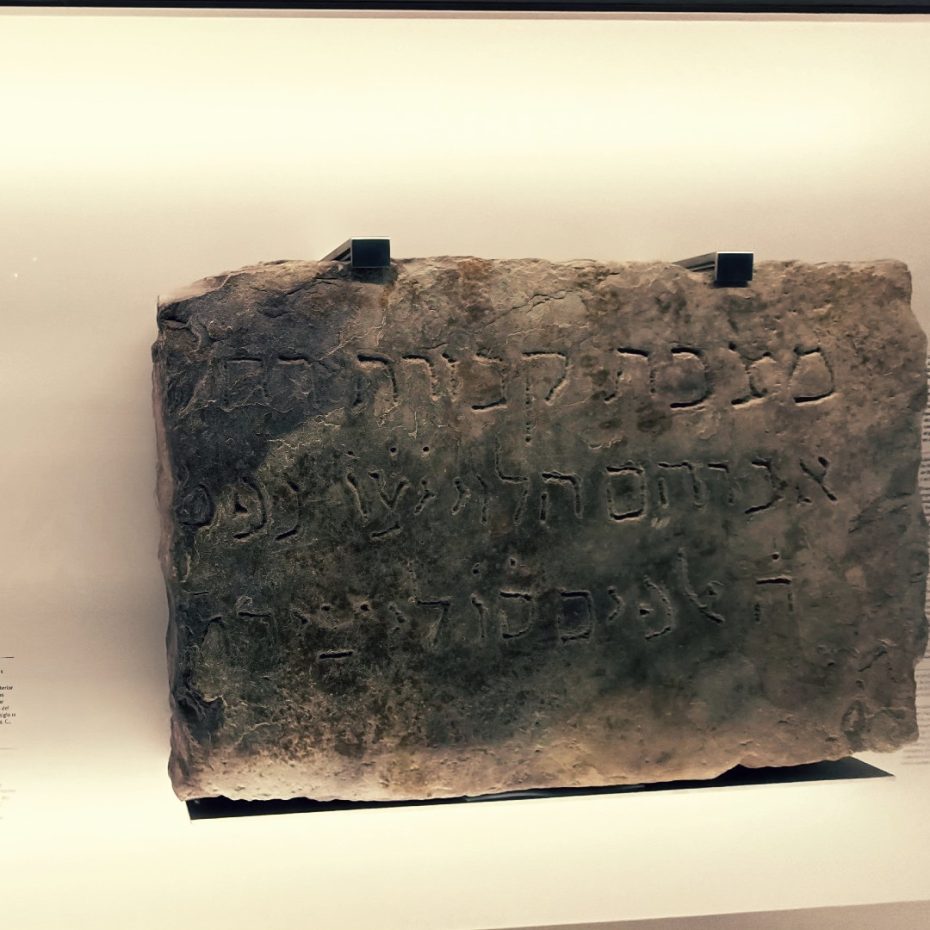
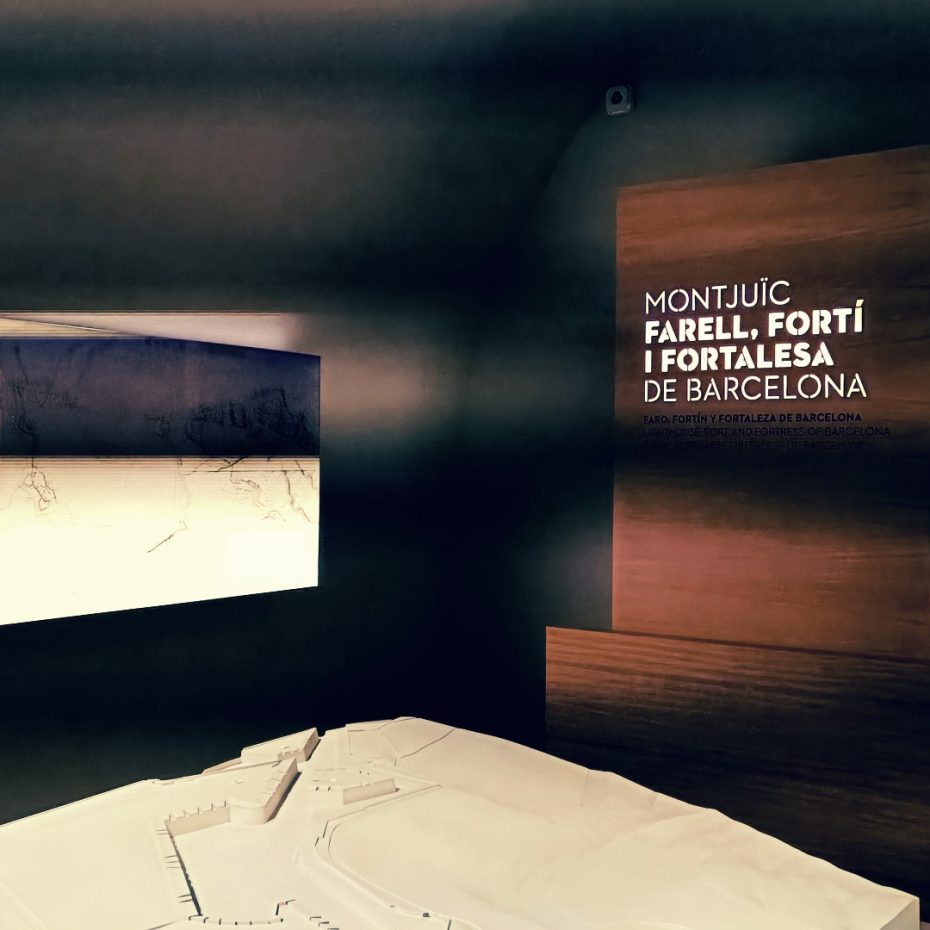
The castle is also home to the Montjuïc Interpretation Center, which permanently shows visitors the evolution and history of both the mountain and the castle.
Montjuïc Castle: Plan Your Visit
You can discover all the castle offers by booking a tour of the Castell de Montjuïc + cable car ticket.
How to Get to Montjuïc Castle
Due to its high location and its dramatic placement next to the Mediterranean Sea and near the historic city center, Montjuïc Castle is one of the best panoramic viewpoints in Barcelona.
There are several ways to access the castle, including by funicular and cable car, on foot, by public transportation, or by car.
Getting to Montjuïc Castle by Cable Car
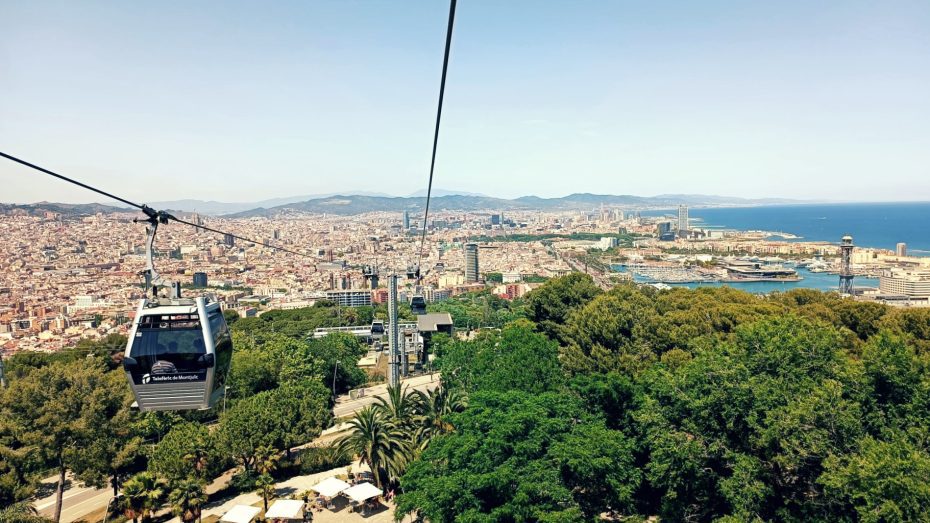
To get to Montjuïc Castle by cable car, you first need to take the Montjuïc Funicular at the Paral·lel metro station L2 L3 FM. The funicular will drop you off at the Parc de Montjuïc Station FM TM where you need to take the cable car that brings you to the top of Montjuïc, where the castle is located.
Although the combination of the funicular and the cable car is the most scenic way to reach the top of Montjuïc, especially if you want to enjoy stunning panoramic views of Barcelona, keep in mind that being a tourist attraction itself, the cable car ticket is not particularly cheap.
The Montjuïc Funicular, being a municipal transportation mode, is integrated within TMB’s fares, and its price is equivalent to a bus or metro ride.
Getting to Montjuïc Castle by Bus
The bus is another excellent (and economical) way to get to Castell de Montjuïc. Bus line 150 originates at Avenida de la Reina María Cristina (Plaça d’Espanya) and ends directly at the castle.
The route covers the entire Montjuïc mountain and takes about 20 minutes from María Cristina. Line 150 also connects with the Montjuïc Funicular and the cable car at the Avinguda de Miramar-Estació del Funicular stop.
Getting to Montjuïc Castle by Car
If you opt to reach Montjuïc Castle by private vehicle, there is a large public parking lot next to the castle, including a coach area. Access to this parking lot is via Carrer dels Tarongers.
Another option is to get to the castle by taxi; the trip from downtown Barcelona takes about 20 minutes and costs around 8-10 €.
Walking Up to Montjuïc Castle
The more athletic visitors can opt to walk up through the winding paths of Montjuïc mountain, either through the Poble Sec neighborhood or via Avenida de María Cristina, which connects the park with Plaça d’Espanya.
No matter the route, you need to access Avenida de Miramar and continue the ascent from there. Perhaps the easiest way to walk up to Montjuïc Castle is by first taking the Montjuïc Funicular at Paral·lel L2 L3 FM and then continuing the journey from there.
Castell de Montjuïc: Brief History
In 1640, during the Rebellion of Catalonia, the first fortification on Montjuïc mountain was built: a quadrilateral of earth with a stone and mud coating. In January 1641, French engineers improved this dry-stone work. This provisional fortification successfully repelled the assault of Castilian troops. By 1651, a new fort had been built, consisting of two square enclosures with bastions at the corners.
The primitive fort was transformed into a castle in 1694. The layout occupied the entire flat area at the top of the hill, with three bastions facing the city and a line of battlements overlooking the sea. During the War of the Spanish Succession in 1705, Charles Mordaunt, Lord of Peterborough, captured the castle for the Catalans. However, on April 25, 1706, Philip V retook the fortress. On May 12, the Catalans recaptured it, but it did not return to Bourbon hands until September 12, 1714.
In 1751, military engineer Juan Martín Cermeño demolished the old fort and completed the shaping of the fortifications, equipping them with services and cisterns, one of which provided drinking water. He also excavated the moat based on the plans of the famous French military engineer Sébastien Le Prestre, Marquis de Vauban.
Several works were carried out between 1779 and 1799, and the castle took on the appearance it has largely preserved to this day.
At the end of the 18th century, the castle was part of the group of vertices where data was taken and triangulations made to accurately measure the terrestrial meridian, which allowed for determining the meter’s length.
On February 13, 1808, Napoleonic troops entered Barcelona and occupied the castle.
In 1842, during the Regency of Espartero, the city of Barcelona was bombarded from Montjuïc Castle to suppress the revolutionary uprising. The following year, in the wake of the Jamància revolt, General Prim ordered a new bombardment, this time targeting the shipyards and walls.
At the end of the 19th century, the castle was turned into a prison. Workers involved in the anarchist violence of the 1890s were imprisoned and tortured here.
In 1936, it was filled with victims of revolutionary repression and, after the Spanish Civil War, with victims of the Franco regime, including the President of the Generalitat of Catalonia, Lluís Companys, who was imprisoned, tried in a summary trial, and executed on October 15, 1940.
Until 1960, when it was handed over to the city, Montjuïc Castle remained a military prison. On June 24, 1963, it was inaugurated as the Museum of the Army.
At the end of April 2008, the city council removed an equestrian statue of Spanish dictator Francisco Franco that had stood there since 1963. Finally, on June 15, the Spanish government ceded the castle to the city.
In 2009, the Montjuïc Military Museum closed its doors for good, and on October 15 of that year, after cataloging and packing all the pieces, their transfer to other institutions began.
On October 15, 2011, in the presence of the Government of Catalonia and the Barcelona City Council, the Catalan flag that President Companys had raised in 1936 to mark the recovery of the castle for the city of Barcelona was reinstated.
Although this castle may not be an essential visit during a first trip to Barcelona, it is still very worthwhile.


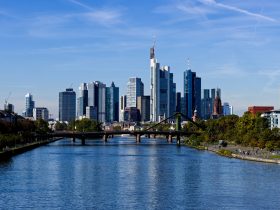





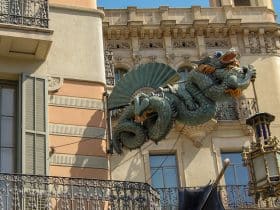









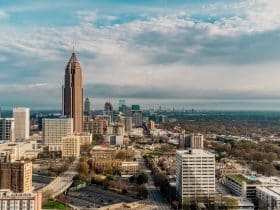

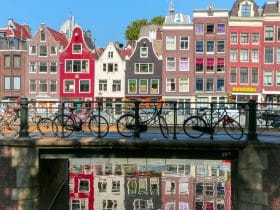


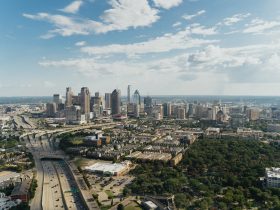



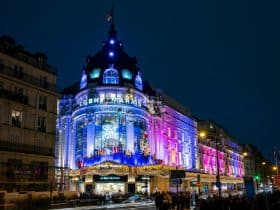

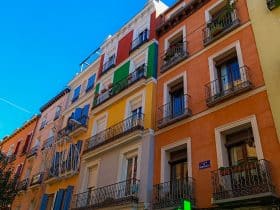
Leave a Reply
View Comments